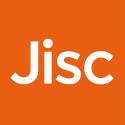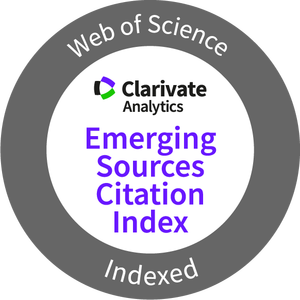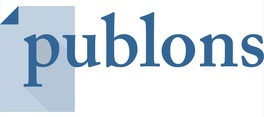Estrategias educativas para el desarrollo de la psicomotricidad en estudiantes de educación inicial: Una revisión sistemática
Resumen
El objetivo de esta investigación implicó analizar las estrategias educativas para el desarrollo de la psicomotricidad en estudiantes de educación inicial, a través de una revisión sistemática. Se adoptó un enfoque cualitativo, mediante bases de datos académicas reconocidas como Scopus, Redalyc, Scielo y ProQuest. Las ecuaciones de búsqueda empleadas incluyeron combinaciones de términos clave utilizando operadores booleanos como "AND" y "OR". Los hallazgos más relevantes de la revisión destacan que las estrategias educativas centradas en la actividad física y la psicomotricidad son fundamentales para el desarrollo integral de los niños, ya que no solo favorecen el desarrollo motor, sino que también tienen un impacto significativo en las habilidades cognitivas, emocionales y sociales. La personalización de los programas de actividad física, adaptándolos a las características específicas de cada entorno escolar y a las necesidades individuales de los niños, se muestra como un factor clave para maximizar su efectividad. Asimismo, se resalta la importancia de la intervención temprana y de la planificación cuidadosa de las actividades, que deben integrar simultáneamente los aspectos físicos, emocionales y cognitivos, creando un entorno de aprendizaje holístico. La integración de actividades físicas que favorezcan tanto la motricidad gruesa como fina permite a los niños no solo mejorar sus habilidades motoras, sino también fortalecer capacidades cognitivas esenciales, como la memoria, la atención y la resolución de problemas.
Descargas
-
Resumen1474
-
PDF892
Citas
Álvarez, Y. A., & Couto, J. M. P. (2020). Perceived importance of motor skills in early childhood education in schools in Vigo (Spain). Educação e Pesquisa, 46, 1–16. https://doi.org/10.1590/S1678-4634202046207294
Arufe Giráldez, V., Pena García, A., & Navarro Patón, R. (2021). Efectos de los programas de Educación Física en el desarrollo motriz, cognitivo, social, emocional y la salud de niños de 0 a 6 años: Una revisión sistemática. Sportis, 7(3), 448–480. https://doi.org/10.17979/sportis.2021.7.3.8661
Bedoya Salaza, D. M., & Arenas Hoyos, A. A. H., & Álvarez Sossa, M. E. (2021). Los efectos de los programas pedagógicos curriculares que aplican juegos motrices en el desarrollo de las funciones ejecutivas en etapa preescolar: Una revisión sistemática. Revista Boletín Redipe 11(2), 205-223
Bernate, J. (2021). Educación Física y su contribución al desarrollo integral de la motricidad. Revista de Ciencia y Tecnología en la Cultura Física, 16(2), 17–30.
Bernate, J. A. (2021). Revisión documental de la influencia del juego en el desarrollo de la psicomotricidad. Sportis. Scientific Journal of School Sport, Physical Education and Psychomotricity, 7(1), 171–198. https://doi.org/10.17979/sportis.2021.7.1.6758
Bernate, J., Fonseca, I., & Babativa, H. (2022). Revisión sistemática de las estrategias didácticas en la Educación Física para el desarrollo de habilidades motrices. Ciencia y Deporte, 8(1), 4234.
Cárdenas Freire, E. M., & Meza Intriago, H. A. (2023). Desarrollo de la motricidad fina para mejorar el aprendizaje de la escritura en los niños de segundo año de educación general básica. Revista Científica Arbitrada Multidisciplinaria PENTACIENCIAS, 5(6), 721–736. https://doi.org/10.59169/pentaciencias.v5i6.887
Carmen, P. (2020). Psychomotor development and sports practice in primary school: Application of the APCM test for preventive purposes. Journal of Physical Education and Sport, 20, 2143–2150. https://doi.org/10.7752/jpes.2020.s3288
Ceiro Catasú, W., Moreno Fiallos, M., & Aranda Pazmiño, S. (2023). Técnicas innovadoras para el desarrollo de la motricidad fina en niños de 3 y 5 años de la Educación Inicial. Sinergia Académica, 6(3), 41-52.
España, L., & Samada, Y. (2023). Sistema de actividades para el desarrollo de la motricidad fina en niños de 4 años. Polo del Conocimiento, 9, 1832–1861. https://doi.org/10.23857/dc.v9i3
Fathi Azar, E., Mirzaie, H., Jamshidian, E., & Hojati, E. (2023). Effectiveness of perceptual-motor exercises and physical activity on the cognitive, motor, and academic skills of children with learning disorders: A systematic review. Child, 49(6), 1006–1018. https://doi.org/10.1111/cch.13111
García-Hermoso, A., Ramírez-Vélez, R., Lubans, D. R., & Izquierdo, M. (2021). Effects of physical education interventions on cognition and academic performance outcomes in children and adolescents: a systematic review and meta-analysis. British Journal of Sports Medicine, 55(21), 1224–1232. https://doi.org/10.1136/bjsports-2021-104112
Jiménez, E., Burgos, E., & Violet, J. (2024). Metodología para potenciar la psicomotricidad en la educación inicial en el Instituto Salomé Ureña. Criterio, 4(7), 18–27. https://doi.org/10.62319/criterio.v.4i7.29
Jones, D., Innerd, A., Giles, E. L., & Azevedo, L. B. (2020). Association between fundamental motor skills and physical activity in the early years: A systematic review and meta-analysis. Journal of Sport and Health Science, 9(6), 542–552. https://doi.org/10.1016/j.jshs.2020.03.001
León Castro, A., Mora Mora, A., & Tovar Vera, L. (2021). Fomento del desarrollo integral a través de la psicomotricidad. Dilemas contemporáneos Educación Política y Valores, 9(1), 1-13.
León Reyes, C. F., Rocafuerte Humanante, L. J., Cujilema Lucio, L. P., & León-Reyes, B. B. (2024). Psicomotricidad como herramienta educativa en preescolares con necesidades especiales. Ciencia Latina Revista Científica Multidisciplinar, 7(6), 4576–4592. https://doi.org/10.37811/cl_rcm.v7i6.9020
Linzán Molina, D. E. (2023). Estudio diagnóstico del desarrollo de la psicomotricidad en niños de preparatoria. Revista Latinoamericana de Ciencias Sociales y Humanidades, 4(2), 3200-3215. https://doi.org/10.56712/latam.v4i2.829
Lupe, M., & Lozano, S. (2021). Las estrategias metodológicas para el desarrollo de la psicomotricidad fina en los niños del primer año de educación básica. Science and Education, 2(2), 6-21.
Malambo, C., Nová, A., Clark, C., & Musálek, M. (2022). Associations between fundamental movement skills, physical fitness, motor competency, physical activity, and executive functions in pre-school age children: A systematic review. Children, 9(7), 1-17. https://doi.org/10.3390/children9071059
Moon, J., Webster, C. A., Stodden, D. F., Brian, A., Mulvey, K. L., Beets, M., Egan, C. A., McIntosh, L. I. F., Merica, C. B., & Russ, L. (2024). Systematic review and meta-analysis of physical activity interventions to increase elementary children’s motor competence: A comprehensive school physical activity program perspective. BMC Public Health, 24(1), 1-16. https://doi.org/10.1186/s12889-024-18145-1
Moschos, G., & Elisana, P. (2021). The effect of a psychomotor intervention program in children 3–10 years of age: A systematic review. Body Movement and Dance in Psychotherapy, 17(4), 294–309.
Nielsen Rodríguez, A., Romance García, A., & Chinchilla Mingue, C. (2020). Los ambientes de aprendizaje como metodología activa promotora de la actividad física en Educación Infantil. Reto, 9, 498–504.
Shunta Rubio, E. M., & Chasi Espinosa, J. N. (2023). La motricidad fina en la educación inicial. Ciencia Latina Revista Científica Multidisciplinar, 7(1), 3568–3598. https://doi.org/10.37811/cl_rcm.v7i1.4677
Vanhala, A., Widlund, A., Korhonen, J., Haapala, E. A., Sääkslahti, A., & Aunio, P. (2024). Developmental associations of fundamental motor skills and executive functions in preschoolers — The role of physical activity and the effects on early numeracy. Trends in Neuroscience and Education, 34(1), 1-12. https://doi.org/10.1016/j.tine.2024.100220
Las obras que se publican en esta revista están sujetas a los siguientes términos:
1. El Servicio de Publicaciones de la Universidad de Murcia (la editorial) conserva los derechos patrimoniales (copyright) de las obras publicadas, y favorece y permite la reutilización de las mismas bajo la licencia de uso indicada en el punto 2.
© Servicio de Publicaciones, Universidad de Murcia, 2013
2. Las obras se publican en la edición electrónica de la revista bajo una licencia Creative Commons Reconocimiento-NoComercial-SinObraDerivada 3.0 España (texto legal). Se pueden copiar, usar, difundir, transmitir y exponer públicamente, siempre que: i) se cite la autoría y la fuente original de su publicación (revista, editorial y URL de la obra); ii) no se usen para fines comerciales; iii) se mencione la existencia y especificaciones de esta licencia de uso.
3. Condiciones de auto-archivo. Se permite y se anima a los autores a difundir electrónicamente las versiones pre-print (versión antes de ser evaluada) y/o post-print (versión evaluada y aceptada para su publicación) de sus obras antes de su publicación, ya que favorece su circulación y difusión más temprana y con ello un posible aumento en su citación y alcance entre la comunidad académica.



















